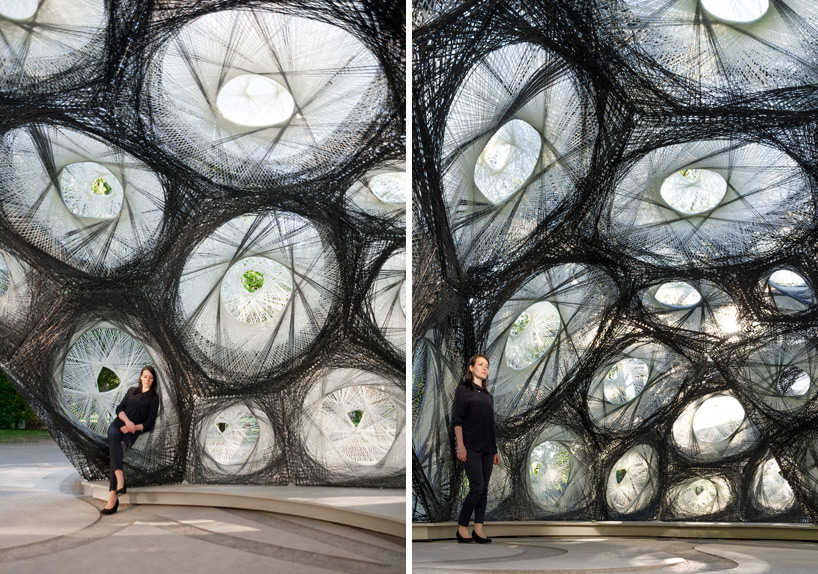INHALE is a cultural platform where artists are presented, where great projects are given credit and readers find inspiration. Think about Inhale as if it were a map: we can help you discover which are the must-see events all over the world, what is happening now in the artistic and cultural world as well as guide you through the latest designers’ products. Inhale interconnects domains that you are interested in, so that you will know all the events, places, galleries, studios that are a must-see. We have a 360 degree overview on art and culture and a passion to share.

The Institute for Computational Design (ICD) and the Institute of Building Structures and Structural Design (ITKE) of the University of Stuttgart have constructed another bionic research pavilion. The project is part of a successful series of research pavilions which showcase the potential of novel design, simulation and fabrication processes in architecture. The project was planned and constructed within one and a half years by students and researchers within a multi-disciplinary team of biologists, paleontologists, architects and engineers.
The focus of the project is a parallel bottom-up design strategy for the biomimetic investigation of natural fiber composite shells and the development of novel robotic fabrication methods for fiber reinforced polymer structures. The aim was the development of a winding technique for modular, double layered fiber composite structures, which reduces the required formwork to a minimum while maintaining a large degree of geometric freedom.
Therefore, functional principles of natural lightweight structures were analyzed and abstracted in cooperation with the Institute of Evolution and Ecology and the department for Paleobiology of the University of Tübingen. Through the development of a custom robotic fabrication method, these principles were transferred into a modular prototype pavilion.
Biomimetic Investigation
This investigation of natural lightweight structures was conducted in an interdisciplinary cooperation of architects and engineers from Stuttgart University and biologists from Tubingen University within the Module: Bionics of Animal Constructions led by prof. Oliver Betz (biology) and Prof. James. H. Nebelsick(geosciences). During the investigation, the Elytron, a protective shell for beetles’ wings and abdomen, has proved to be a suitable role model for highly material efficient construction. The performance of these lightweight structures relies on the geometric morphology of a double layered system and the mechanical properties of the natural fiber composite. The anisotropic characteristic of this material, which consists of chitin fibers embedded in a protein matrix, allows for locally differentiated material properties.
ICD ITKE Research Pavilion 2013-14 from ICD on Vimeo.
via itke.uni-stuttgart.de





























































